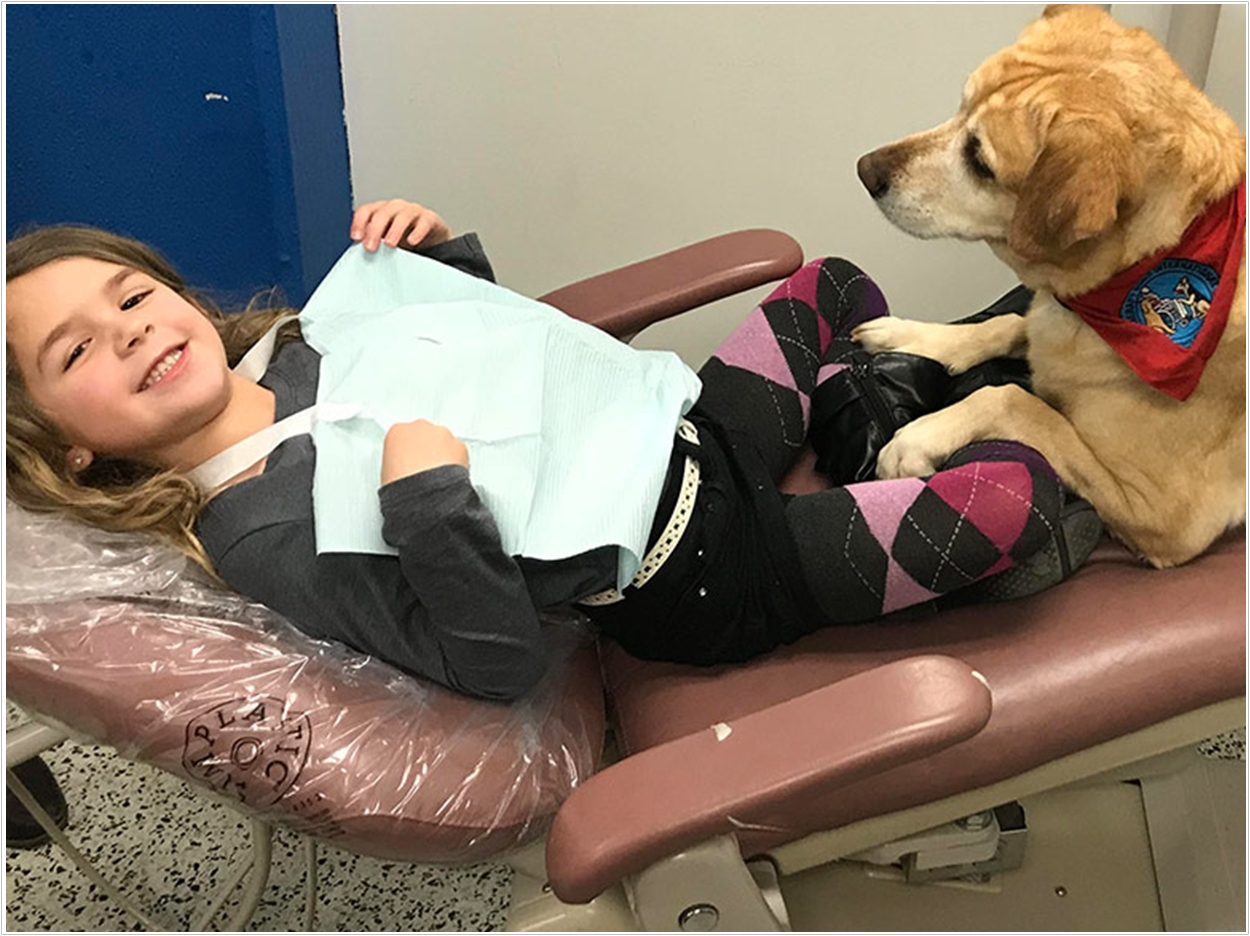
Children who visit the dentist report reduced situational fear when a certified therapy dog is present, according to the Case Western Reserve University (CWRU) School of Dental Medicine and Jack, Joseph, and Morton Mandel School of Applied Social Sciences.
The researchers surveyed 199 dental patients and 79 dental professionals about the acceptability of and desire to have therapy dogs in the pediatric dental office, with 63% of the patients interested and 80% of the patients “open to the idea.”
Then, 18 children between the ages of 8 and 12 who needed cavities filled participated in the pilot study, the second phase of a two-part study that examined the relationship between certified therapy dogs and children.
The researchers collected the children’s saliva samples before and after the dogs were brought into the dentist office to measure their cortisol and alpha-amylase, both stress indicators, and oxytocin, a relaxation response.
“This is an innovative step in the research because oxytocin has remained somewhat illusive. Being able to measure change of oxytocin over time helps us understand, from a strengths perspective, the physiological benefit of human-animal interaction,” said Anna Vincent, an instructor and researcher at the Mandel School.
The research found that 83% of parents and guardians supported the therapy dog’s presence during their child’s dental appointment, but all of them supported the idea in a follow-up survey.
“Within the past few years, it’s become widely accepted that pet ownership and animal assisted therapy has various biopsychosocial positive effects on people,” said Vincent. “Existing research has provided evidence of the benefits. What hasn’t been as clear is how therapy animals help.”
Vincent said it’s important to distinguish therapy dogs from service dogs and emotional support animals. The role of therapy dogs, she said, is to react and respond to people and their environment, under the guidance and direction of their owner. For example, the children in the dentist office were encouraged to gently pat or talk to a dog as a calming technique. Service dogs, on the other hand, are trained to provide specific support for individuals with disabilities.
Vincent said that perhaps the biggest takeaway of the pilot study was that collecting saliva samples is a viable, noninvasive way to measure stress and fear indicators in social science research.
“The idea is to find out how an animal can augment a situation,” said Vincent. “Is it reducing fear, anxiety, stress, or all of them? The next step is to get a much larger sample size.”
Plans are to continue the research at CWRU and to expand the same methodology to people interacting with horses at the Field Stone Farms Therapeutic Riding Center in Chagrin Falls, Ohio, where Vincent also works as the director of program quality.
Related Articles
Therapy Dog Joins the Staff at Pediatric Dental Practice
Dogs De-Stress Dental Students
Dental Phobias Have No Impact on Treatment Planning












